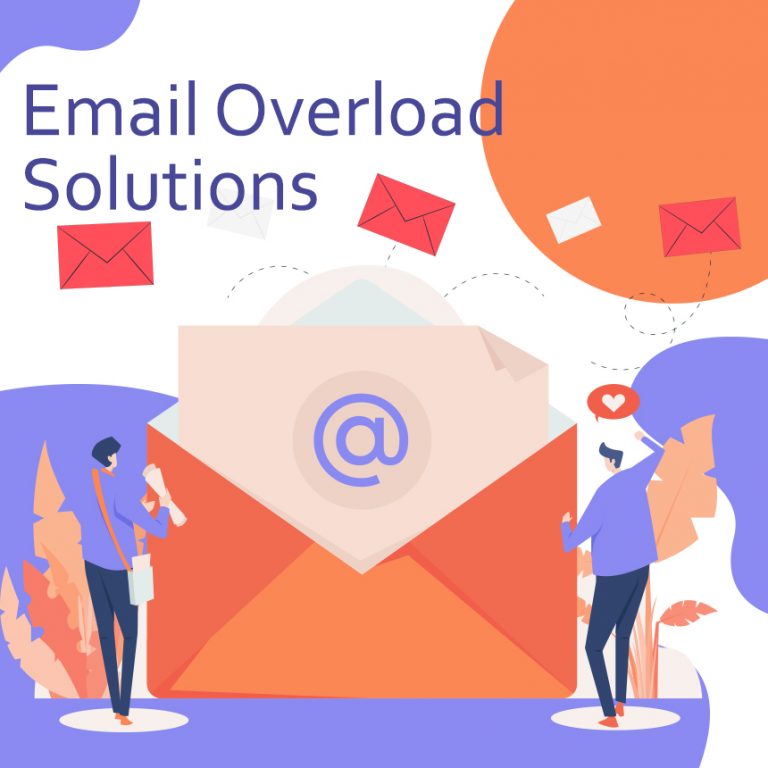
If anybody is claiming emails are dying, then consider that as a conspiracy theory. On the contrary, emails are being used increasingly at a rapid pace. World-over people are using emails for both professional and personal purposes and it has not shown any signs of waning off. Now that we have set a tone for the subject that we are going to discuss today, let us get straight to the topic.
As per a report, the total number of consumer and business emails sent and received per day will exceed 281 billion by the end of 2020. The growth will further spike to reach 333 billion by 2022. This only means there is an email overload to your inbox as individual users or as online businesses message consumers.
The email overload contributes to the overall information overload and could severely affect your productivity and distract your concentration. This is the reason why many email users look for solutions to deal with email overload manually. How about going a step further and using automation to cut the clutter?
Related: Building A Winning Combination of ChatBots and Email Marketing!
Email Automation
Speaking of automation, artificial intelligence (AI) is one of the promising solutions that have come by in the form of AI-powered tools that have now been adopted by many well-known email providers. Gmail launched its Smart Compose solution that uses AI to learn typing habits of a user and automatically finishes their sentences for them.
But here in this blog, you will be reading how AI can help you deal with cluttered inboxes and serve as a critical tool to enhance your productivity and focus.
Some Email related facts
- Globally 149,513 emails are sent every minute
- An average employee spends about 13 hours a week reading and replying to emails
- It equates to 28% of the total work time, or 650 hours a year spend on emails
- 62% of emails in the average inbox is unimportant and/or irrelevant to recipients, so they can be deleted without reading
- The percentage of irrelevant and unimportant emails was 58% some years ago but their number is increasing
- It takes about 64 seconds to recover from an interruption delivered by an email and return to the previous work rate
- Limiting email access dramatically reduces stress levels
- In 2012, a man named Joey Manansala from the U.S. has managed to clutter his email with 4,294,967,257 unread emails (A vulgar clutter indeed).
Just imagine the plight of that poor guy who went through a ridiculous amount of time to segregate through the clutter of emails.
Related: Avoid These Mistakes In Your Video Email Marketing Campaigns
AI to the rescue
There is a surge in the use of AI-powered tools all around the world. The list of applications of AI does not end with chatbots, smart cameras, sorting robots, machine learning-guided text proofreading, and so on. AI can also be used in email management as it delivers that much-needed personalization and automation of an email user experience. There is a could-based AI App that utilizes powerful analysis algorithms to investigate communications and predict what’s important to the user.
It does by analyzing the relationship with each contact and providing data-supported tips on how to manage email from that contact. This app may conclude that the user is extremely likely to delete an email from a certain sender, so it highlights it so the user could send it to the trash quicker and easier. You can swipe and archive all irrelevant and unimportant messages and focus your attention on those that matter. This AI-powered solution allows designating people the user would like to prioritize and display their messages on top of the inbox.
Natural language processing (NLP) enables the tool to determine questions and requests in an email text and let the user know that the sender wants them to respond by showing them instead of standard previews. Another AI-powered tool keeps emails as efficient and relevant as possible to help users reduce the effect of email overload. Actionable conversations are summarized by filtering the most important messages.
Final Thought
With many companies and organizations dabbling in AI-powered tools and solutions of late, AI is indeed at the helm of coming up with more promising solutions to email overload.
The technology can help to sort emails more effectively already and reduce the time we spend on reading irrelevant an unimportant emails, focus our attention only on important messages, and even know how much time it will take us to clear out the clutter.
It’s safe to assume that AI-powered email management tools will continue developing and delivering better solutions to users.
Related: Learn How To Easily Embed Video In Email Marketing!


